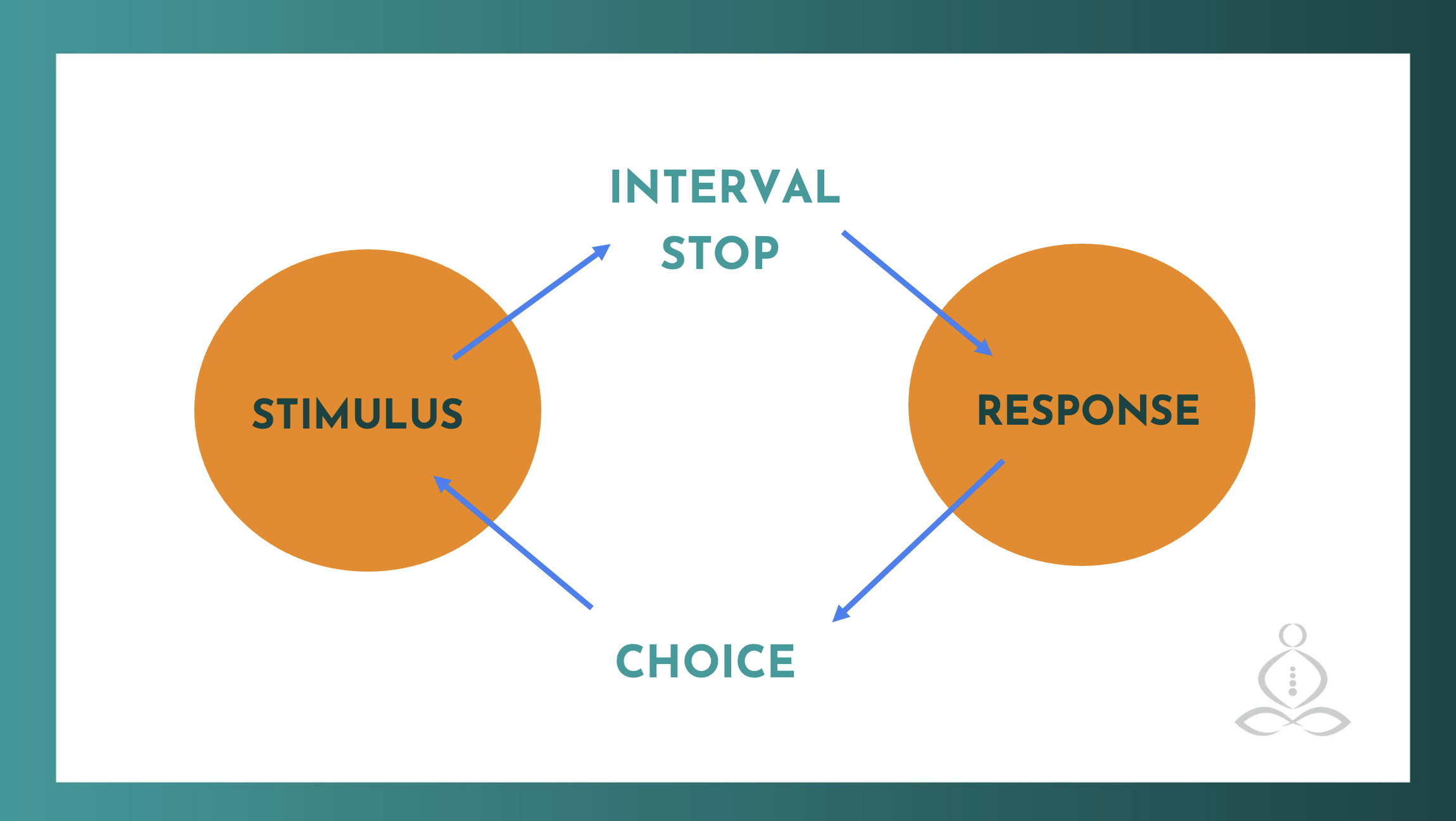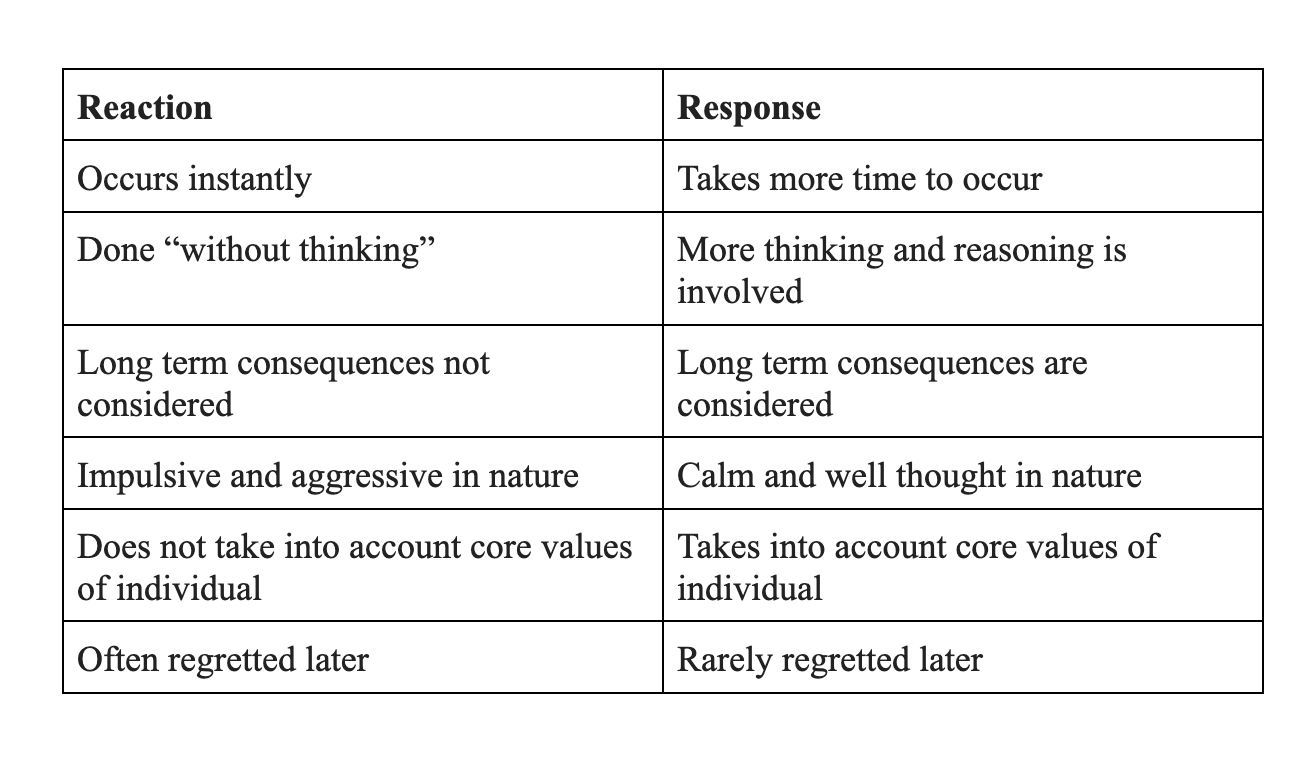
RESPONSE vs. REACTION
Are you in control?
Situation 1: You are cooking dinner with your partner. He/She came back from work in a terrible mood. You inadvertently burn a piece of bread you are toasting and he/she makes a toxic remark, which you take personally. Immediately you get into a fight that ends up with both of you saying things you didn’t mean. Your relaxing night is ruined and you go to bed feeling restless.
Situation 2: You are cooking dinner with your partner. He/She came back from work in a terrible mood. You inadvertently burn a piece of bread you are toasting and he/she makes a toxic remark. You can sense your partner is in a bad mood and that he/she doesn’t mean what he/she’s said. You cut them some slack, decide not to take it personally, and communicate that you can sense some tension and ask if he/she is OK. Your partner feels safe enough to open up and share their day with you. Your night ends up being a positive bonding experience for you both.
DEFINITION
A reaction is a quick action toward a stimulus. It’s emotional and instantaneous, an impulse driven by pure emotion without much consideration of the consequences. With a reaction, we act "without thinking," which can result in a negative outcome.
A response occurs after considering someone else's feelings, not just our own, and the desired outcome of the situation. With a response, we give ourselves the time to align ourselves with our values. This creates the space for a better outcome for ourselves and others.
The main difference between response and reaction is that there is a pause between stimulus and answer. We call this the “response interval”. The response interval pause not only dramatically improves our chances of a better result but also provides us with CHOICE. When we choose how to respond we can feel more empowered and centered.

HOW TO PRACTICE RESPONDING
There is a 4-step process we recommend for people to start responding instead of reacting.
It can be remembered using the acronym STOP
STOP: Pause whatever it is you are doing just for a brief moment.
TAKE A BREATH: Do 1 to 3 deep inhalations or simply bring your focus to your breath.
OBSERVE: Try to label what emotions are coming up most strongly. It’s easier to process (or question) emotion when you can identify it.
PROCEED: Choose who you want to be in that moment, and get curious about whether the emotion you are experiencing is an old reaction to something in the past or something relevant to the present that you want to acknowledge. Act in a way that creates your desired outcome.
WHY DO PEOPLE REACT MORE THAN THEY RESPOND?
Reactions are habitual and easy. They involve less willpower. Reactions are also linked to our “fight or flight” response and require less brain power. Unless you were taught to respond vs. react in your formal education or by your parents, it is likely that you have spent most of your life in reaction.
The good news is, we can rewire our brains to choose a response over a reaction over time. Rewiring takes patience, time, and compassion for ourselves and others. There will be times when we are successful and others when we fail. The key is to become more and more aware of our “response Interval”.
REACTING VS RESPONDING DIFFERENCES
Even though a reaction and a response may seem similar, they are actually quite different in nature. Check these points out to better identify whether you are in reaction or response:

“Between stimulus and response, there is a space. In that space is our power to choose our response. In our response lies our growth and our freedom.” Viktor L. Frankl
WANT A TOOL TO BOOST YOUR ABILITY TO RESPOND?
Join our FREE 7-Day Brain Breaks Challenge to increase awareness and calm throughout the day!
© Cozymind - All Rights Reserved - Terms & Conditions - Site by Funnel Gorgeous.


